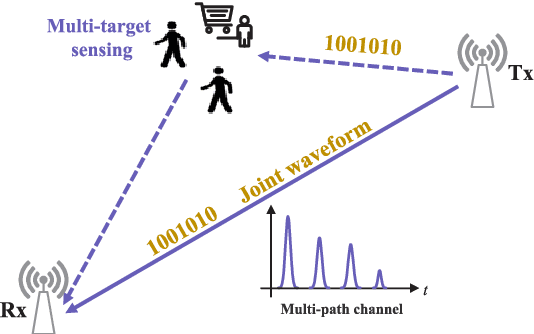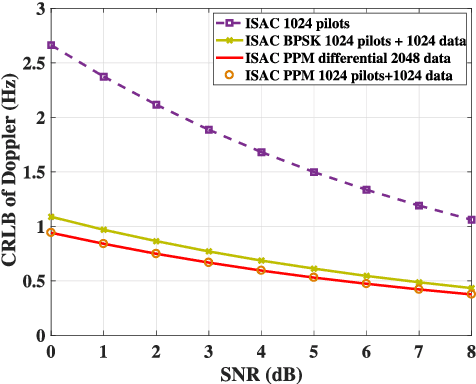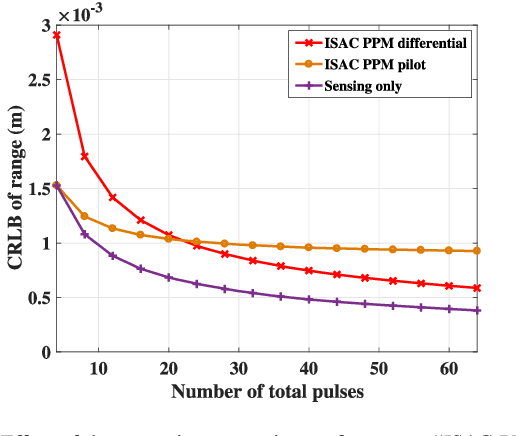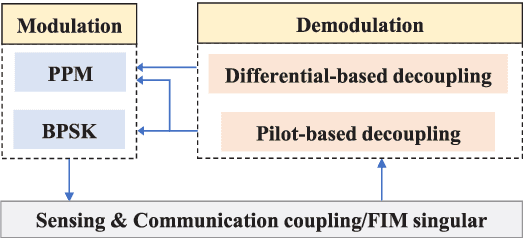Zenan Zhang
Fundamental Limits of Pulse Based UWB ISAC Systems: A Parameter Estimation Perspective
Oct 17, 2024



Abstract:Impulse radio ultra-wideband (IR-UWB) signals stand out for their high temporal resolution, low cost, and large bandwidth, making them a highly promising option for integrated sensing and communication (ISAC) systems. In this paper, we design an ISAC system for a bi-static passive sensing scenario that accommodates multiple targets. Specifically, we introduce two typical modulation schemes, PPM and BPSK, for data transmission. The essential coupling between sensing and communication is examined through the Fisher information matrix (FIM). Accordingly, we introduce a pilot-based decoupling approach that relies on known time-delays, as well as a differential decoupling strategy that uses a known starting symbol position. Finally, we assess the sensing and communication performance under various modulation and demodulation schemes under the constraints of current UWB standards. This assessment utilizes the Cramer-Rao Lower Bound (CRLB) for sensing and the Shannon capacity limit for communication, offering theoretical insights into choosing suitable data signal processing methods in real-world applications.
Is Underwater Image Enhancement All Object Detectors Need?
Nov 30, 2023Abstract:Underwater object detection is a crucial and challenging problem in marine engineering and aquatic robot. The difficulty is partly because of the degradation of underwater images caused by light selective absorption and scattering. Intuitively, enhancing underwater images can benefit high-level applications like underwater object detection. However, it is still unclear whether all object detectors need underwater image enhancement as pre-processing. We therefore pose the questions "Does underwater image enhancement really improve underwater object detection?" and "How does underwater image enhancement contribute to underwater object detection?". With these two questions, we conduct extensive studies. Specifically, we use 18 state-of-the-art underwater image enhancement algorithms, covering traditional, CNN-based, and GAN-based algorithms, to pre-process underwater object detection data. Then, we retrain 7 popular deep learning-based object detectors using the corresponding results enhanced by different algorithms, obtaining 126 underwater object detection models. Coupled with 7 object detection models retrained using raw underwater images, we employ these 133 models to comprehensively analyze the effect of underwater image enhancement on underwater object detection. We expect this study can provide sufficient exploration to answer the aforementioned questions and draw more attention of the community to the joint problem of underwater image enhancement and underwater object detection. The pre-trained models and results are publicly available and will be regularly updated. Project page: https://github.com/BIGWangYuDong/lqit/tree/main/configs/detection/uw_enhancement_affect_detection.
 Add to Chrome
Add to Chrome Add to Firefox
Add to Firefox Add to Edge
Add to Edge